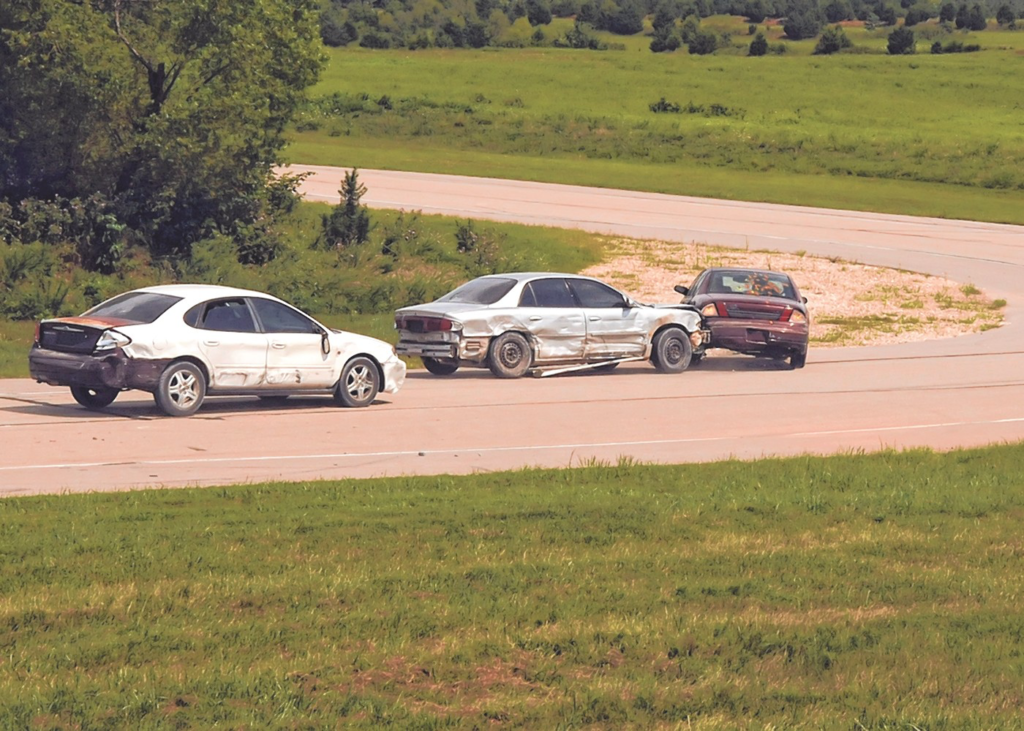Avoid dangers, crashes, and hostile actors while traveling by vehicle with 8 foundational practices of tactical driving. These techniques can help you avoid a carjacking, flee from an active shooter event, or avoid surveillance.

DRIVE LIKE THIS
》Have an out. While driving there are 4 clock positions directions (12, 3, 6, & 9 o’clock), make sure one is always clear. You can’t control the rear, a vehicle (VEH) could be tailgating or stop at your 6. On multi-lane roads, keep your 3 or 9 clear, if a car begins to overtake you, slow down and back off the vehicle at your 12. If something happens, you want to be able to have a clear pathway out. That could be used to avoid a collision or egress from an ambush.
》Know your roads. This goes beyond know where you’re going. Have backup routes (2 contingencies). Know backroads, school release times that may cause traffic, construction zones, potholes, etc. Always carry a printed map of your regional, state, and country. Don’t rely on GPS but if operational use it to your advantage to stay alert for road conditions and shortcuts.
》Unbelt under 10. If you’re moving in rush hour traffic or circling a parking garage to find a parking spot, unhook your seat belt if traveling under 10mph. Be prepared to respond to threats or bail from your VEH without getting tangled on your belt.
》Secure the entries. Keep doors locked at all times (while driving, while parked, while approaching, at all times.) Keep windows up or, if necessary to improve audible situational awareness, keep them cracked (3″.) This is enough room to allow air to flow and you to hear exterior sounds but not enough for someone to easily reach in to attack or unlock the door.
》Avoid an ambush or tail. Change up your route. Don’t take the same road to work or home everyday. Keep an eye on your rear view mirrors. Take 3 right turns to detect a surveillance VEH on your 6. Time your intersection and look to use a traffic light to traffic to lose the tail. Drive to a safe location, call 911, just don’t go home until the tail is lost. Keep an eye for suspicious persons approaching your VEH in slow or stopped traffic.
》Ram a roadblock. A frame-on-body VEH will be more efficient at ramming. Be aware of the effects caused by an airbag deployment and determine if it shuts off the fuel pump for your make/model. Get NHTSA approval to have an on/off switch installed. Line your approach so that the frame rail (use the front left or right headlight as a reference) of your VEH hits the rear wheel axle of the obstructing VEH. If there are two VEH in the roadblock don’t try to ram between them, focus on only one. Impact at 15-20mph in low gear, look beyond the obstruction and accelerate rapidly upon contact.
》Evade with techniques. Know how to reverse without depending on mirrors (they break off) or cameras. Look over your right shoulder. Know how to do a J-Turn (reverse 180) and Pursuit Intervention Technique (PIT maneuver). If jumping a curb, do so at an angle (45°) to avoid override (scraping from lack of clearance).
》Always back into a parking spot. Known as “combat parking,” this technique allows for a quick getaway and avoids on of the top 6 types of vehicle crashes.
》Always back into a parking spot. Known as “combat parking,” this technique allows for a quick getaway and avoids on of the top 6 types of vehicle crashes.
Download the Grayman Bugout Vehicle Guide HERE
Get Intel and Situational Awareness Updates HERE
One last tip. What’s really the difference between Regular and Premium gasoline? Answer, not much when it comes down to an emergency situation where you need fuel. If your vehicle is tuned for 87 octane unleaded gasoline, you can run higher octane blends like 89 and 93. There will be no longterm issues and negligible performance changes. If you can afford the added cost and 87 fuel is out, don’t hesitate to buy the premium. If your vehicle is tuned for higher octane such as 89 or 93 unleaded gasoline, you can, in an emergency situation, run a lower octane blend such as 87. You should not do so regularly. Running regular in an engine designed for premium on a longterm basis or under heavy loads can cause engine knock, and damage the pistons, valves or spark plugs. If you have no other options and need fuel to get from point A to point B, it is typically safe to run 87 for a short drive without causing irreversible damage.
